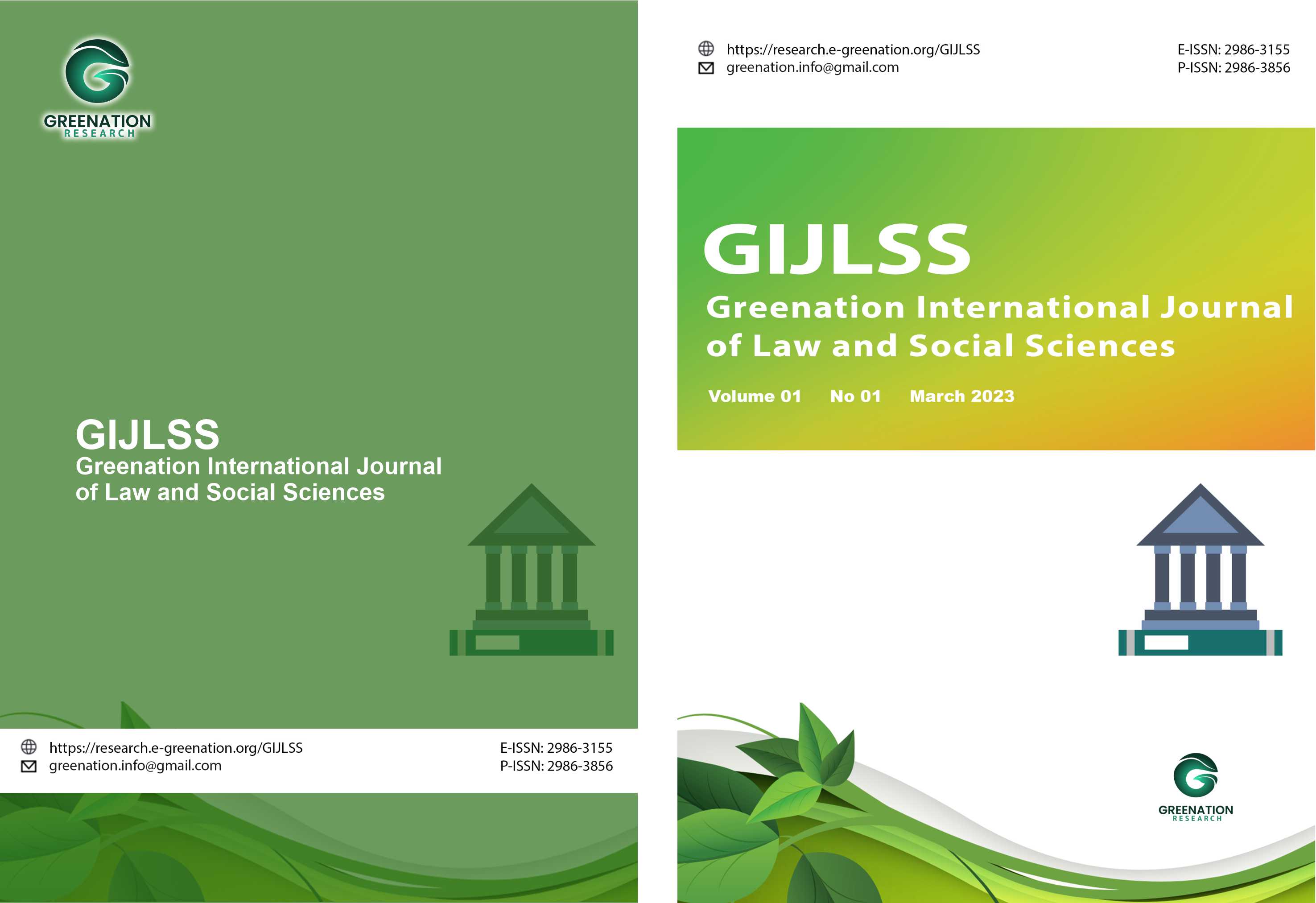The Security Intelligence Gathering Debate between Human Intelligence (Humint) versus Technological Intelligence (Techint)
DOI:
https://doi.org/10.38035/gijlss.v3i2.497Keywords:
Intelligence Gathering, Security Intelligence, Technological Intelligence, Human IntelligenceAbstract
This article aims to compare security intelligence collection with humint and techint approaches to obtain intelligence information for security and public order purposes. The research on intelligence collection emphasizes the elements of intelligence focus, strengths, and challenges as well as prospective trends in intelligence application, by examining it from micro, meso and macro perspectives. The approach was adopted with interviews of security intelligence officers and literature review based on secondary sources, combined with an analysis of the challenges of intelligence collection faced in dealing with security threats and the evolving intelligence technology landscape and the role of humans in the future. The findings reveal that intelligence collection has made great strides due to the impact of information, communication and computer technology. However, human intelligence remains indispensable and continues to coexist with technological advancements due to the unique and irreplaceable qualities of humans compared to devices and machines.
References
Aldrich, R. J. (2015). The 100 billion dollar brain: Central intelligence machinery in the UK and the US. International Affairs, 91(2), 393–403. https://doi.org/10.1111/1468-2346.12242
Andrew, C. (2004). Intelligence, International Relations and “Under-theorisation.” Intelligence and National Security, 19(2), 170–184. https://doi.org/10.1080/0268452042000302949
Berman, E. (2014). Regulating Domestic Intelligence Collection. Washington and Lee Law Review, 71(1), 3–91. http://scholarlycommons.law.wlu.edu/wlulr/vol71/iss1/5/
Bilgi, ?. (2016). Intelligence cooperation in the european union: An impossible dream? In All Azimuth (Vol. 5, Issue 1). https://doi.org/10.20991/allazimuth.167342
Brodeur, J.-P. (2007). High and Low Policing in Post-9/11 Times. Policing, 1(1), 25–37. https://doi.org/10.1093/police/pam002
Crelinsten, R. (2021). Terrorism, Democracy, and Human Security; A Communication Model; First Edition. Routledge Taylor and Fr.
Creswell, J. W., & Poth, C. N. (2018). Qualitative Inquiry Research Design: Choosing Among Five Approaches (4th ed., Vol. 13, Issue 1). SAGE Publications.
Crosston, M., & Valli, F. (2017). An Intelligence Civil War: “HUMINT’” vs. “TECHINT”, Cyber, Intelligence, and Security, Vol. 1, Issue 1, Spring 2017. Intelligence, and Security |, 1(1), 67–82. http://www.inss.org.il/he/wp-content/uploads/sites/2/systemfiles/An Intelligence Civil War “HUMINT’” vs. “TECHINT”.pdf
Davies, P. (2013). MI6 and the Machinery of Spying: Structure and Process in Britain’s Secret Intelligence. http://books.google.co.uk/books?id=TTW2h5GHlWkC
Deery, P. (2010). Australian Security Intelligence Organisation. In Spies, Wiretaps, and Secret Operations: an Encyclopedia of American Espionage: volumes 1-2 (Vols. 1–2, pp. 59–60).
Downing, J. (2023). Social Media, Digital Methods and Critical Security Studies. New Security Challenges, 71–108. https://doi.org/10.1007/978-3-031-20734-1_3
Gill, P., Marrin, S., & Phythian, M. (2008). Intelligence theory: Key questions and debates. In Intelligence Theory: Key Questions and Debates (Vol. 9780203892). https://doi.org/10.4324/9780203892992
Heimeriks, K. H., Klijn, E., & Reuer, J. J. (2009). Building Capabilities for Alliance Portfolios. Long Range Planning, 42(1), 96–114. https://doi.org/10.1016/j.lrp.2008.10.005
Jensen, M. A. (2012). Intelligence failures: What are they really and what do we do about them? Intelligence and National Security, 27(2), 261–282. https://doi.org/10.1080/02684527.2012.661646
Juneau, T., Massie, J., & Munier, M. (2023). Intelligence Cooperation under Multipolarity: Non-American Perspectives. In J. Massie & M. Munier (Eds.), Intelligence Cooperation under Multipolarity: Non-American Perspectives. University of Toronto Press.
Leigh, I., & Wegge, N. (2018). Intelligence and oversight at the outset of the twenty-first century. In Intelligence Oversight in the Twenty-First Century: Accountability in a Changing World (1st ed., pp. 7–24). Routledge. https://doi.org/10.4324/9781351188791-2
Mulya, A., Ismail, M., & Jumaeng, S. (2023). Perspective Of Security Intelligence in Law Enforcing Terrorism in Indonesia. International Journal of Social Service and Research, 3(12), 3125–3136. https://doi.org/10.46799/ijssr.v3i12.620
Mulya, A., Marzuki Ismail, R. Bayu Yuliantoro, & Heriyanto Kandati. (2022). Dampak Implementasi Lawfull Interception pada Pemberantasan Tindak Pidana Terorisme. Formosa Journal of Multidisciplinary Research, 1(2), 367–382. https://doi.org/10.55927/fjmr.v1i2.551
Nunan, J. (2020). Developing an Evidenced-Based Approach to Enhance the Collection of Intelligence from Covert Human Intelligence Sources Declaration. December.
O’Neil, A. (2017). Australia and the ‘Five Eyes’ intelligence network: the perils of an asymmetric alliance. Australian Journal of International Affairs, 71(5), 529–543. https://doi.org/10.1080/10357718.2017.1342763
Pasmore, W. A. (1995). Social Science Transformed: The Socio-Technical Perspective. Human Relations, 48(1), 1–21. https://doi.org/10.1177/001872679504800101
Robert, R., & R, U. A. R. (2023). Konstruktivisme Bruno Latour dan Implikasinya Terhadap Ide Keagenan Sosiologi. Masyarakat: Jurnal Sosiologi, 28(2). https://doi.org/10.7454/MJS.v28i2.13565
Sheptycki, J. (2017a). Liquid modernity and the police métier; thinking about information flows in police organisation. Global Crime, 18(3), 286–302. https://doi.org/10.1080/17440572.2017.1313734
Sheptycki, J. (2017b). The police intelligence division-of-labour. Policing and Society, 27(6), 620–635. https://doi.org/10.1080/10439463.2017.1342645
Sims, J. E. (2006). Foreign Intelligence Liaison: Devils, Deals, and Details. International Journal of Intelligence and CounterIntelligence, 19(2), 195–217. https://doi.org/10.1080/08850600500483657
Sood, A., & Enbody, R. (2014). Targeted Cyber Attacks: Multi-staged Attacks Driven by Exploits and Malware. Targeted Cyber Attacks: Multi-Staged Attacks Driven by Exploits and Malware, 1–142. https://doi.org/10.1016/C2013-0-14275-4
Stottlemyre, S. A. (2015). HUMINT, OSINT, or Something New? Defining Crowdsourced Intelligence. International Journal of Intelligence and CounterIntelligence, 28(3), 578–589. https://doi.org/10.1080/08850607.2015.992760
Tatnall, A., & Davey, B. (2019). Rise of the Non-Human Actors: the Internet of Things. In Analytical Frameworks, Applications, and Impacts of ICT and Actor-Network Theory.
Telep, C. W., Ready, J., & Bottema, A. J. (2018). Working towards intelligence-led policing: The Phoenix Police Department intelligence officer program. Policing (Oxford), 12(3), 332–343. https://doi.org/10.1093/police/pax094
Turing, A. M. (2023). Computing Machinery and Intelligence. Brain Physiology & Psychology, LIX(236), 212–240.
Walsh, P. F., & Miller, S. (2016). Rethinking ‘Five Eyes’ Security Intelligence Collection Policies and Practice Post Snowden. Intelligence and National Security, 31(3), 345–368. https://doi.org/10.1080/02684527.2014.998436
Wirtz, J. J. (2016). Understanding intelligence failure: Warning, response and deterrence. In Understanding Intelligence Failure: Warning, Response and Deterrence. https://doi.org/10.4324/9781315673295
Downloads
Published
How to Cite
Issue
Section
License
Copyright (c) 2025 Ade Mulya, Semiarto Aji Purwanto, Angel Damayanti, Hizkia Yosias Polimpung, Yogha Restu Pramadi, Prasetyo Adi Wibowo Putro

This work is licensed under a Creative Commons Attribution 4.0 International License.
Copyright :
Authors who publish their manuscripts in this journal agree to the following conditions:
- Copyright in each article belongs to the author.
- The author acknowledges that the Greenation International Journal of Law and Social Sciences (GIJLSS) has the right to be the first to publish under a Creative Commons Attribution 4.0 International license (Attribution 4.0 International CC BY 4.0).
- Authors can submit articles separately, arrange the non-exclusive distribution of manuscripts that have been published in this journal to other versions (for example, sent to the author's institutional repository, publication in a book, etc.), by acknowledging that the manuscript has been published for the first time at GIJLSS.
























